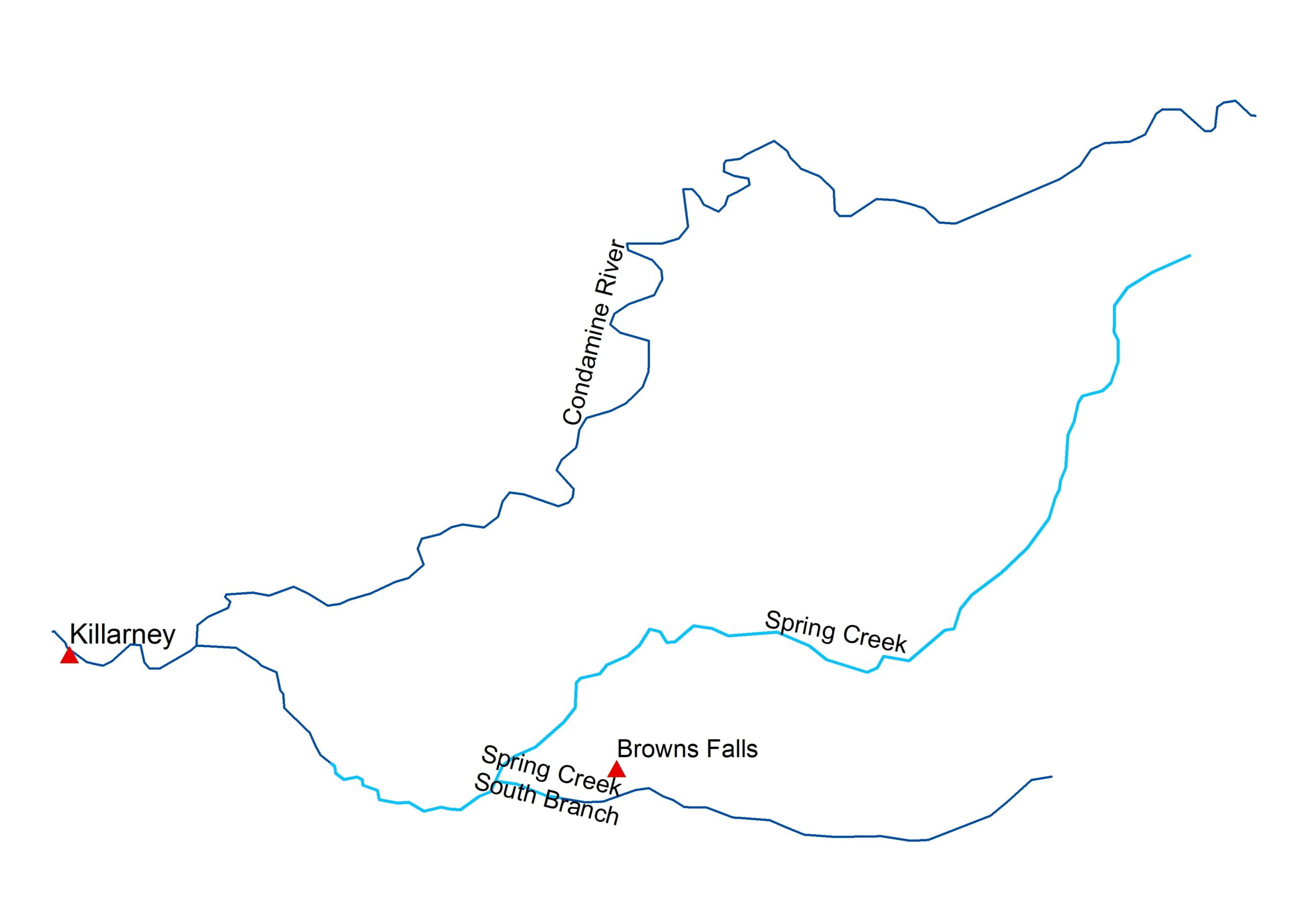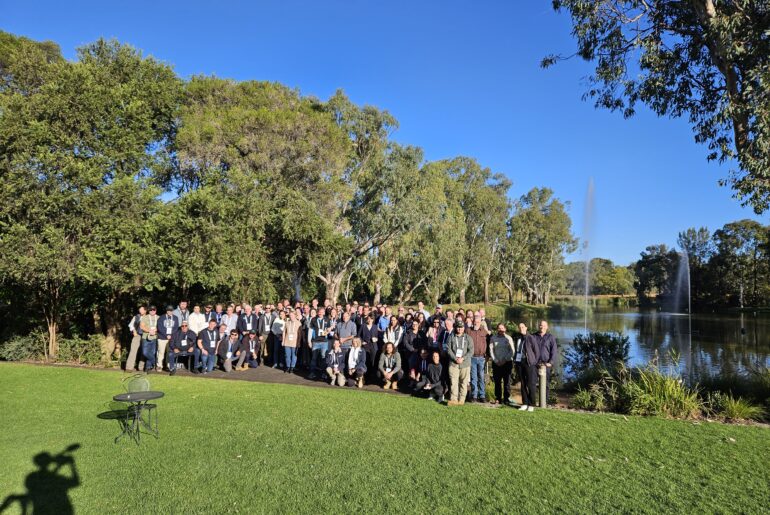Perched high in the mountainous region of the Condamine Catchment headwaters, the project area is a biodiversity hotspot flanking the Qld/NSW border; a tapestry of highly fertile grazing and cropping operations nestled amongst lush ‘Main Range group’ subtropical rainforest. Here, the Condamine Headwater springs form the source of the entire Murray-Darling Basin. Along with the high altitude & forest the springs give rise to very cold instream conditions essential to aquatic species that do not exist in the winding lowland rivers more synonymous with the Murray-Darling.

Home to a stunning array of genera, three niche in-stream species persist in the area; the mountain galaxias, Galaxias olidus, spiny crayfish Euastacus sulcatus and the obscure river blackfish – Gadopsis marmoratus. These species are considered interdependent with each other and are restricted to high altitude streams where temperatures must remain below 28°C, or they cannot survive.
The importance of this Recovery Reach
Current expert opinion finds that river blackfish, the target species for this Recovery Reach, are experiencing severe decline across the entire MDB and are highly vulnerable to localised extinctions. Thus, the upper Condamine Headwaters, being a cool upland area still containing essential habitat, is considered critical for maintaining blackfish presence in Queensland, if not the wider Basin.
Recovering the Condamine Headwaters
Over two years, Southern Queensland Landscapes will work with landowners to undertake actions on their properties that will reduce sedimentation and increase habitat in streams where blackfish persist to maintain their presence. One or more of several reaches in the Condamine Headwaters have been identified for potential target. Of these a significant portion riverine reach in Spring Creek is sought for the first year. Contingent on success and support, an additional reach (also most likely in Spring Creek) will be targeted into the second year.
Maintenance of blackfish in the Condamine Headwaters can succeed only where essential habitat for resident blackfish populations is enhanced, extended, and reconnected – by mitigating impacts of land use and sedimentation on structural and thermal habitat.
Structural habitat is impacted primarily by sediment liberated by clearing for infrastructure, agricultural/pastoral use, and other activities such as recreational 4WDing. Sediment infills streams and deep pools, diminishes protective habitat such as undercut banks and smothers rocks/logs etc. that are essential for egg laying. Decades of sedimentation dramatically alters in-stream form, rendering it uninhabitable for blackfish.
Just as sediment reduces available physical habitat, it also reduces “thermal habitat”. That is, the availability of cool zones where blackfish can retreat during extreme heat events. The predicted increase in average temperatures of 1.17°C by 2030 for the Condamine headwaters region will intensify this threat as evidenced during recent catastrophic drought conditions. Condamine Headwater flows had almost completely ceased and record temperatures triggered a blackfish rescue operation by the State of Qld in February 2020.
Previous efforts
Many historical fencing projects, regeneration and pest mitigation activities have been undertaken by proactive landowners in the Condamine Headwaters to conserve soil, protect and enhance assets. However, a dedicated fish conservation initiative of this kind has never been attempted in the headwaters. If it can successfully demonstrate that landholders can continue their operations whilst contributing to conservation, there may be scope to generate similar recovery projects and other opportunities for the community in the future.
Past research efforts on blackfish in the headwaters indicate local interest in blackfish conservation and allowed for recent sampling work to establish blackfish presence in the targeted area to proceed. Early engagement efforts also indicate a limited awareness of the plight of blackfish, and its vulnerability.
Working with community:
A number of activities with key stakeholders relationships in the Condamine Headwaters region are being provided to provide on-ground coordination and information sharing.
Learn how to design and create waterway crossings that are functional and environmentally conscious, with presentations from Peter Fogarty, Soil & Land Conservation Consulting and Gemma MacKenzie, Fisheries Biologist, Impact Assessment and Management, Queensland Department of Agriculture & Fisheries.
Additional links:
- Factsheets: What is a Waterway? What is a Waterway Barrier work? What is not a Waterway Barrier work?
- Accepted Development Requirements
- SARA Regional Contacts – for pre-lodgement advice
- SDAP Guidelines
- Impact Assessment and Management (fisheries) Email: PlanningAssessment@daf.qld.gov.au
- Planning and building waterway crossings
Golden Guitar winning Australian Country Music artist, Josh Arnold has teamed up with students from Killarney State School to write and produce a music video aimed at highlighting the plight of a tiny native fish at risk of localised extinction.
Listen to the ABC interview (starts at 1:57:20) by Belinda Sanders with the school’s Principal Stephen Reid, Josh Arnold, and two of the students involved.

Jacinta ran two webinars during November 2021. The first was an update on native fish recovery in the upper Condamine headwaters. Peter Unmack presented the second webinar on the mysterious and wonderful fishes of the Upper Condamine, – who they are and where they came from.
Latest updates

Meet the coordinator: Ren Holz
Ren is co-Coordinator of the Upper Condamine Recovery Reach and Project Delivery Officer at Southern Queensland Landscapes. Ren has previously worked in projects monitoring frogs and water cycles for community education and storm water monitoring. Ren holds a Bachelor of Environmental Science (Research) from the University of the Sunshine Coast and was awarded the Undergraduate Award for Excellence in Soil Science from Soil Science Australia.

Meet the coordinator: Bree Humes
Bree is co-Coordinator of the Upper Condamine Recovery Reach and Project Delivery Officer at Southern Queensland Landscapes. Bree is currently studying a double major in Environmental Science and Sustainability, Community Development and Indigenous Studies at USQ. Breanna is a proud Noongar (WA), Gunditjmara (VIC), Wiradjuri woman (NSW) and Jawoyn (NT). Breanna has a strong passion for caring for Country and learning traditional knowledge and is eager to integrate modern science and traditional knowledge for a productive and sustainable future.
For more information:
Please contact Bree Humes.
- Phone: (07) 4620 0111
- Email: breanna.humes@sqlandscapes.org.au

The Native Fish Recovery Strategy will supplement and build on existing knowledge, generated under the previous native fish strategy and will be implemented collaboratively with Basin state governments, First Nations and the wider community. It’s development will be delivered concurrently with the implementation of high-priority implementation activities including the Lower Darling Fish Monitoring and Engagement program and the Native fish emergency response plan.
Main photo (top of page): The Condamine headwaters at Spring Creek.
Photo credit: Queensland Department of Education and Science



